Last Updated on October 29, 2024
If you’ve ever gone for a winter walk and wondered whether pine needles are edible, here’s what you need to know to use these gifts to the winter forager.
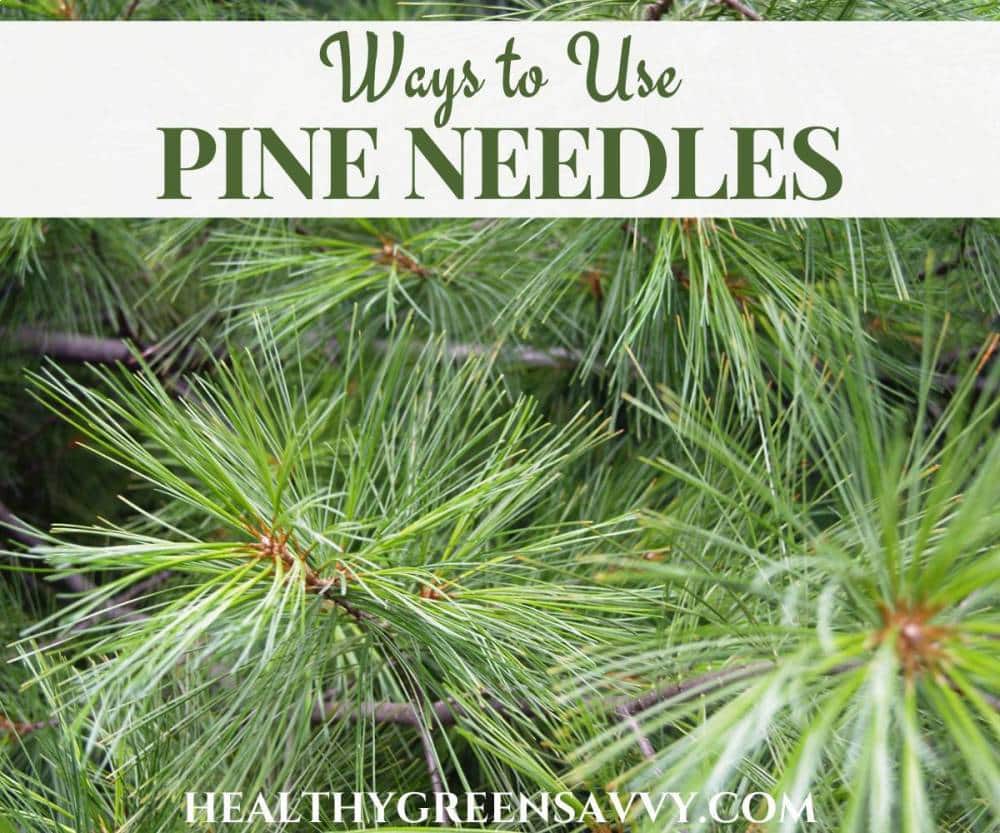
We’re big on pine around here at HealthyGreenSavvy. How many other wild plants offer delicious food and medicine to foragers all year round? If you’re an eager winter forager who’s wondered if you can eat pine needles, you’ve come to the right place.
Foraging pine needles is one of many ways you can combat frustration with the lack of winter plants. Be sure to check out other creative strategies for coping if you hate winter.
CAN YOU EAT PINE NEEDLES?
So the answer to the question are pine needles edible one is yes — and no. If you pluck a pine needle from a tree and try to give it a chew, I suspect you won’t enjoy it much. It won’t likely kill you, either, but of course you want to make sure you’re foraging edible pine needles. They’re among the top wild edible plants beginning foragers should get to know.
First, let’s clarify that pine is a particular genus of tree, not every evergreen you’ve ever seen. Look carefully at your local conifers and you’ll see many arrangements of needles that will help you identify them as spruce, fir, pine, cedar, or yew.
Yews are an especially important one to know, since they are highly toxic. Here’s a great video on identifying yews.
If you want an easy way to identify common conifers, be sure to check out our post on spruce vs fir vs pine.
WHAT DO PINE NEEDLES TASTE LIKE?
Pine needles and other conifer needles have a resinous flavor that varies with the time of year and the type of tree. Some have more citrus notes, while others have a strong flavor some foragers have likened to turpentine. (Which makes sense, since turpentine is made from pine sap.)
Different growing conditions can also affect the flavor of pine needles.
CAUTIONS CONSUMING PINE NEEDLES
Anytime you’re using a new herb, it’s wise to try a very small amount before consuming larger quantities. Though uncommon, some people are allergic to pine.
It’s usually recommended that one avoid pine during pregnancy because of a lack of safety data.
USES FOR EDIBLE PINE NEEDLES & PINE NEEDLE RECIPES
Pine needles have a number of lovely uses, primarily made by extracting those fragrant pine compounds in water, alcohol, or other solvents, though some use chopped needles.
PINE NEEDLE TEA
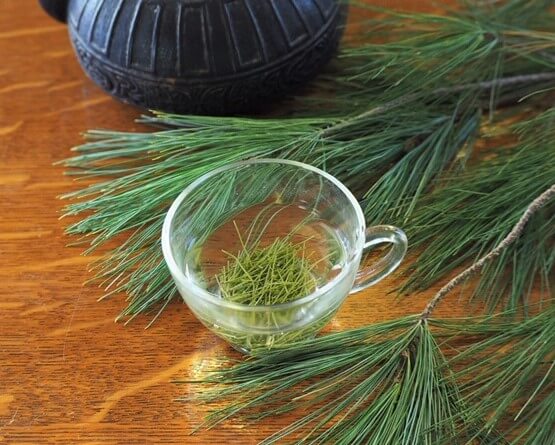
One of the absolute top uses for pine needles is pine needle tea. This tasty and healthy brew contains lots of beneficial plant compounds, and it’s one of the best home remedies for coughs and colds. I especially love drinking it when I have a chest cold.
Here’s what to know about making pine needle tea.
PINE NEEDLE TINCTURE
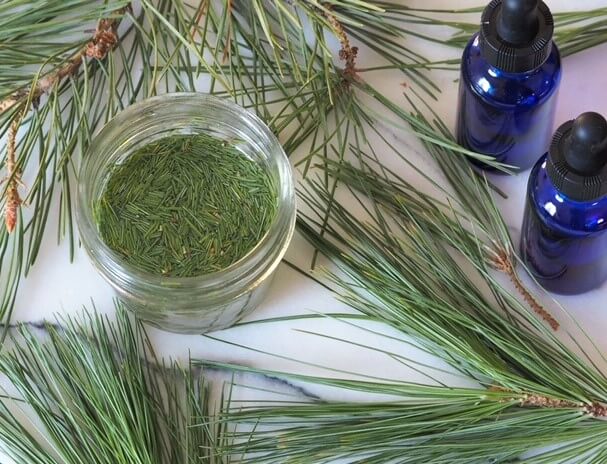
Steeping pine needles in alcohol is an effective way to extract their medicinal compounds and have the benefits of the pine at the ready whenever you want them. I take a small bottle of pine tincture with me when I travel, and I love it for fighting off colds when I feel like I might be coming down with something.
Here’s how to make pine needle tincture.
PINE NEEDLE VINEGAR
You can steep pine needles in vinegar to make an easy pine-infused vinegar, which you can add to salad dressings, use as an incredible-smelling DIY cleaner, or rinse your hair with. Follow the instructions for making pine tincture above, but use vinegar as your solvent. Apple cider vinegar is a favorite if you’re using it for salad dressing or as a hair rinse.
Use plain white vinegar if you’re planning to use it for cleaning.
PINE NEEDLE SYRUP
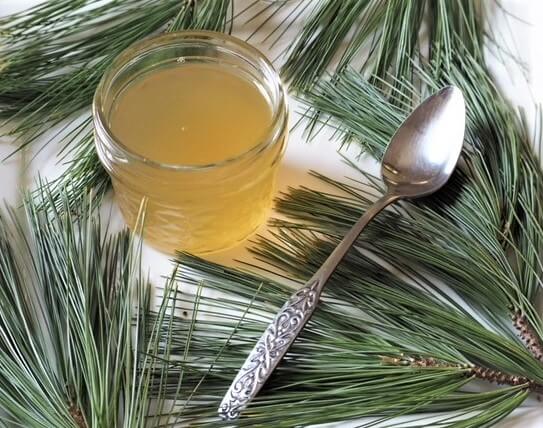
You can use pine needles to make a yummy pine syrup which can be used as a cocktail mixer or an herbal remedy for cough. (Here are lots more herbs for coughs you can try as well.)
Here’s an easy pine syrup recipe.
PINE NEEDLE DRIED SEASONING
You can make a flavorful spice rub with pine needles by drying and grinding needles. Use it on fish, or try it in soups for a bright pop of pine flavor. You can combine the ground needles with salt to make a tasty herbal salt.
OTHER USES FOR PINE NEEDLES
Edible pine needles can be used in other ways as well, in cooking as well as in body care. Below are some fun pine needle recipes to explore.
♦ Try this flavorful pine needle salad dressing from Learning and Yearning.
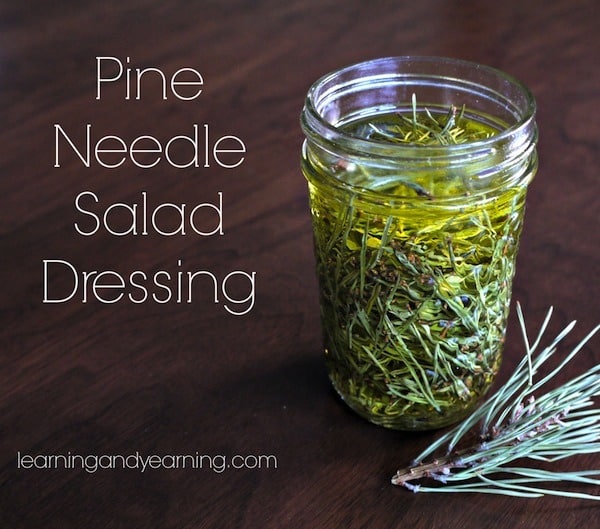
♦ You can use pine needles to make a naturally-fermented pine needle soda with piney flavor.
♦ Pine needle infused honey from Grow Forage Cook Ferment is a tasty sweetener that can help soothe a cough.
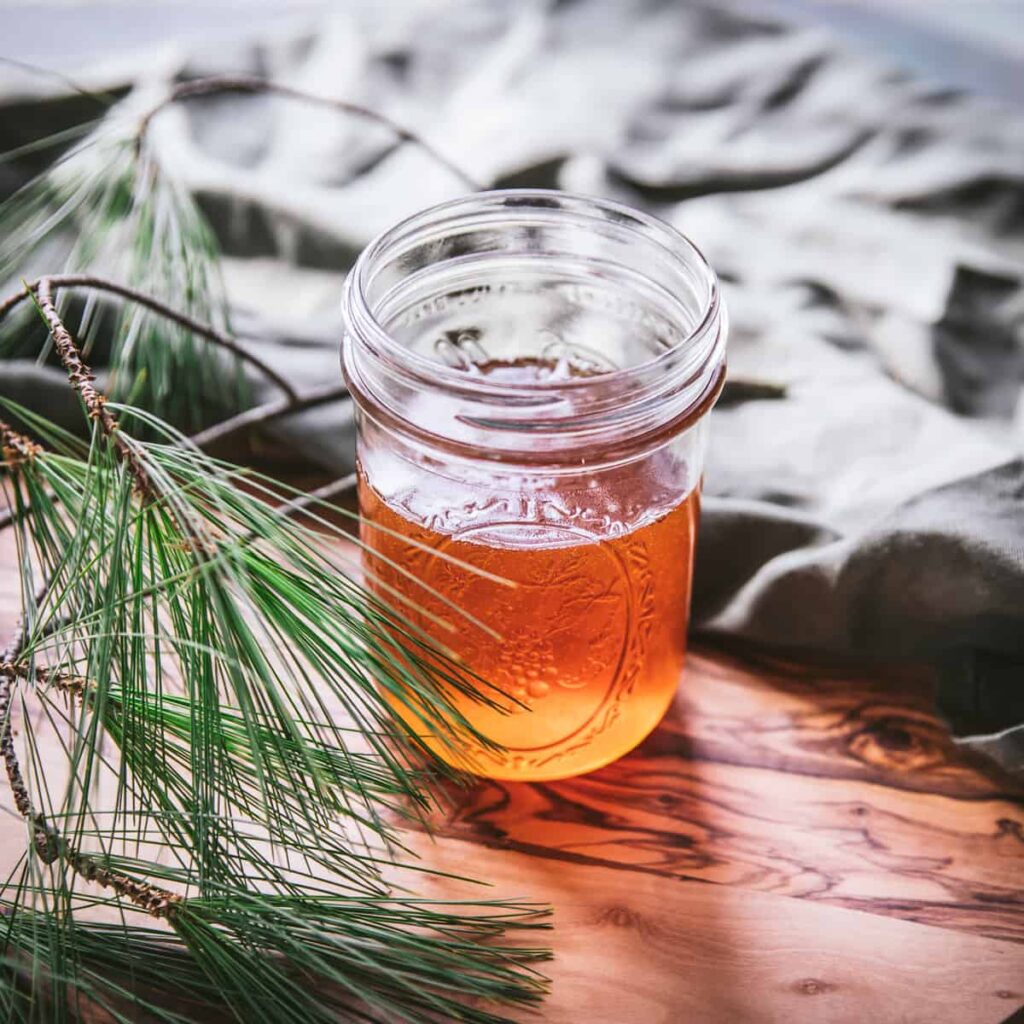
♦ Rebooted Mom uses pine needles in an intriguing pine needle jelly recipe.
♦ These pretty pine needle cookies from Learning and Yearning add a whole new level of holiday spirit to your Christmas cookie exchange.
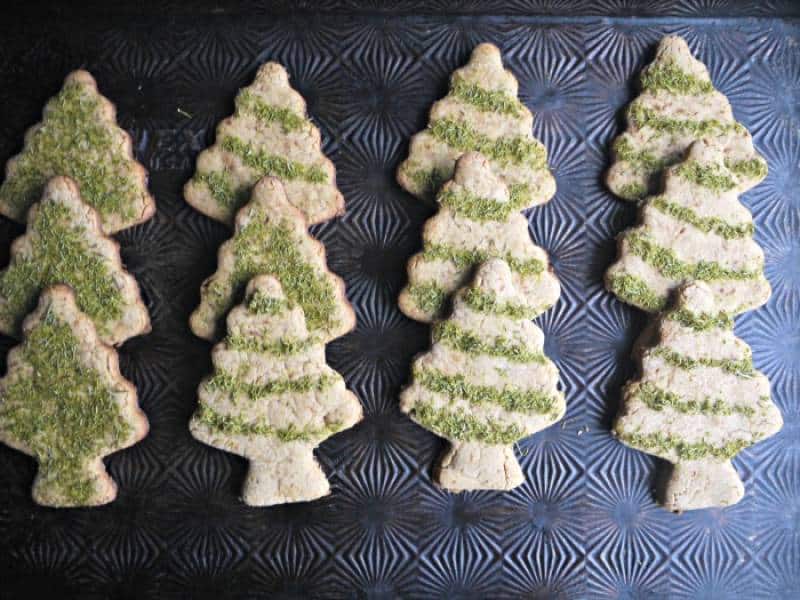
♦ Try making homemade lip balm with pine needles using a recipe shared by Learning Herbs.
♦ Soothing pine bath salts from Learning and Yearning can help bring the feel-good elements of a walk in the forest to your bathtub.
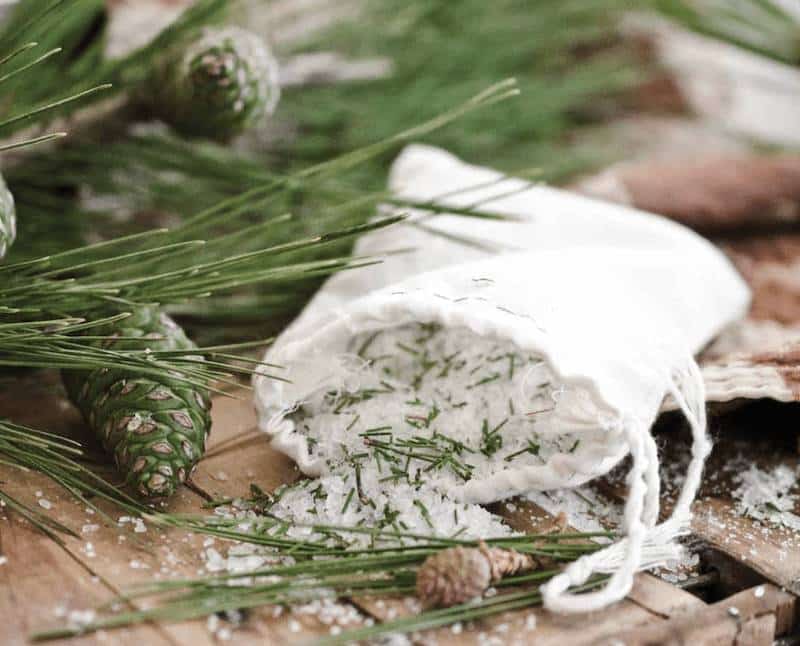
♦ Or use pine needles to make this peppermint pine headache salve from Reformation Acres.
Find loads more ways to use pine needles in this book called How to Eat Your Christmas Tree.
Useful tools for making things with edible pine needles:
IDENTIFYING EDIBLE PINE NEEDLES
–> ALWAYS positively identify plants you’re foraging. There are some toxic conifers that people call pines because they’ve got evergreen needles. Be absolutely sure you’ve identified the right plant before harvesting!
There are more than 100 species of pine in the genus pinus, and they all share a feature we can use to identify them as pines: Clusters of long needles, typically growing in groups of 2 to 5 surrounded with a papery brown covering where they meet the branch.

If you’ve found an evergreen with each needle coming directly out of the branch (rather than in clusters), you’ve likely got a spruce or fir. You can find more information on identifying pine (with photos) in this post on identifying conifers.
Always consult a good field guide or go with a local expert so you’re certain you’re collecting the correct plant.
Save this info on edible pine needles for later!
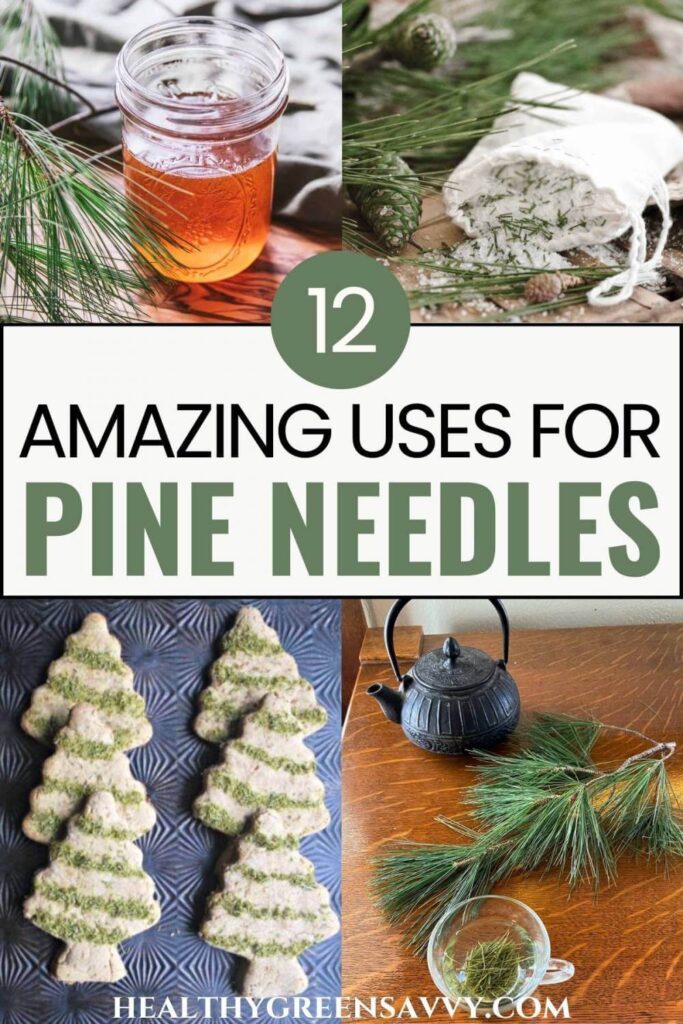
Disclaimers: Though HealthyGreenSavvy and EcoSavvy Writing LLC always aim to provide thorough and accurate information, we assume no liability or responsibility for any consequences, health issues, or symptoms that arise from ingesting or touching any plant described on this website. It is always the reader’s responsibility to ensure accurate plant identification and use multiple reputable sources to confirm. If you have any doubts about the identification of any plant, do not eat it.

Susannah is a proud garden geek and energy nerd who loves healthy food and natural remedies. Her work has appeared in Mother Earth Living, Ensia, Northern Gardener, Sierra, and on numerous websites. Her first book, Everything Elderberry, released in September 2020 and has been a #1 new release in holistic medicine, naturopathy, herb gardening, and other categories. Find out more and grab your copy here.
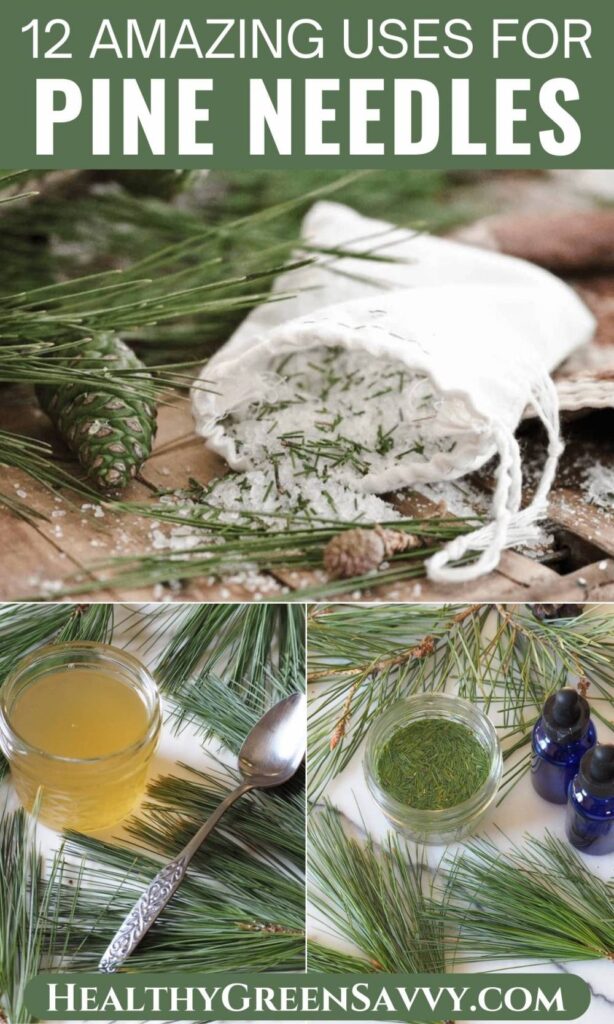
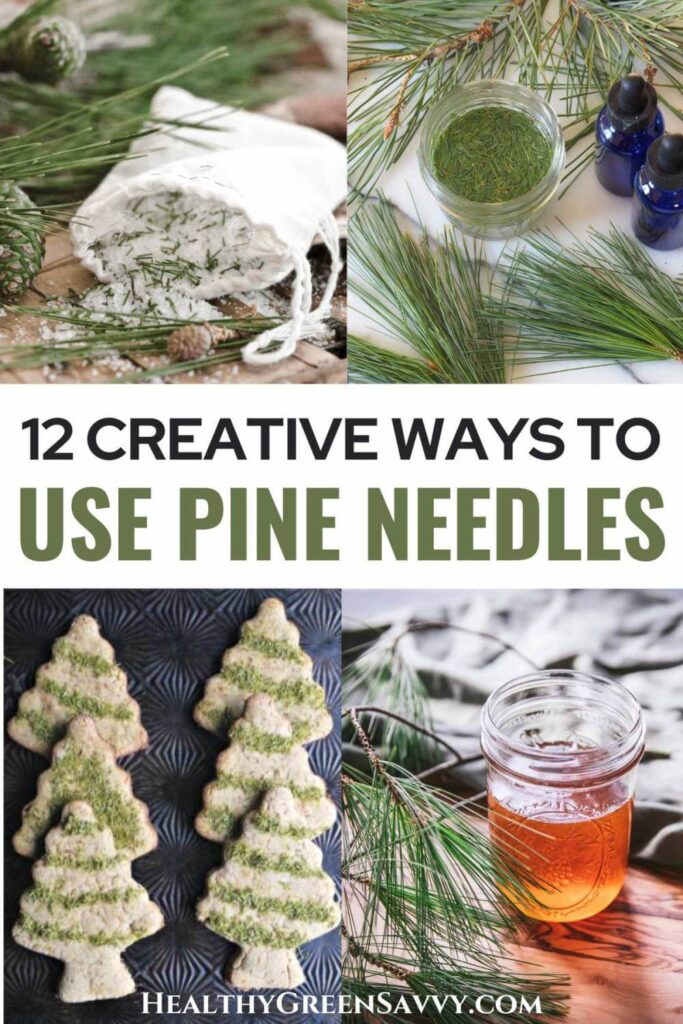
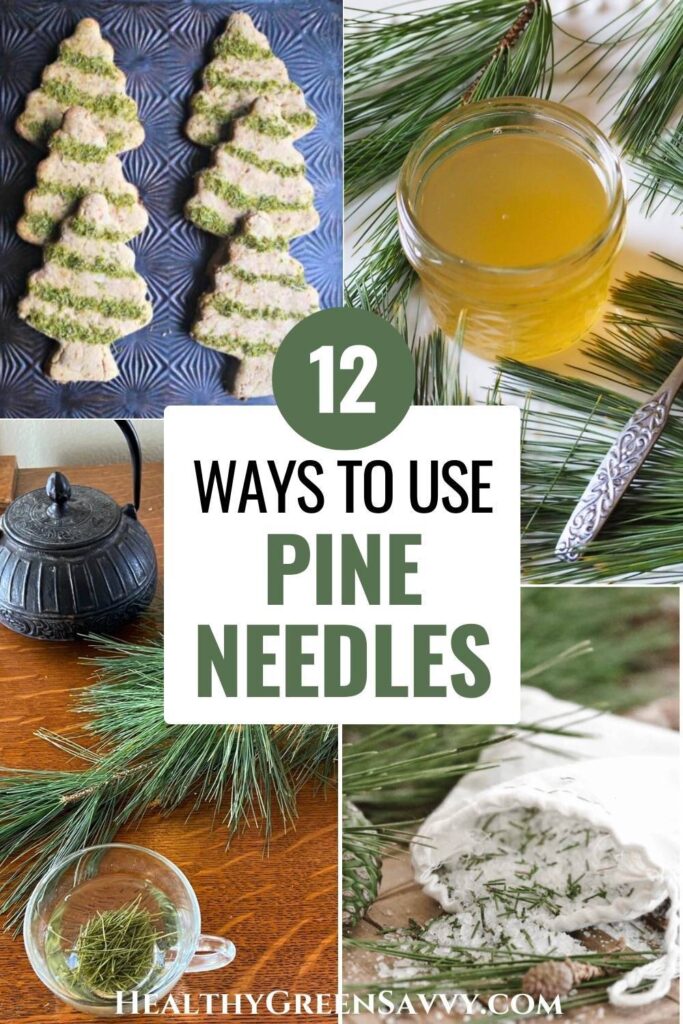
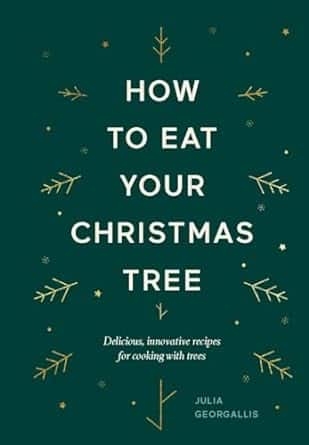
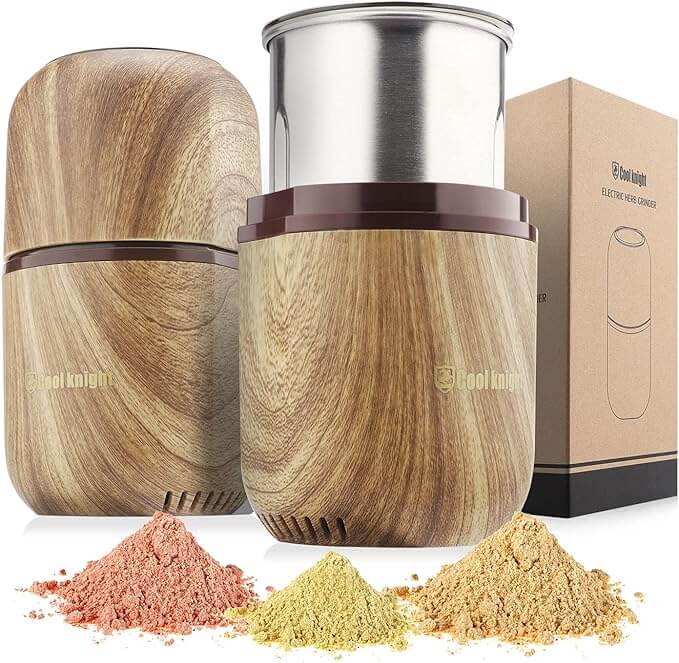

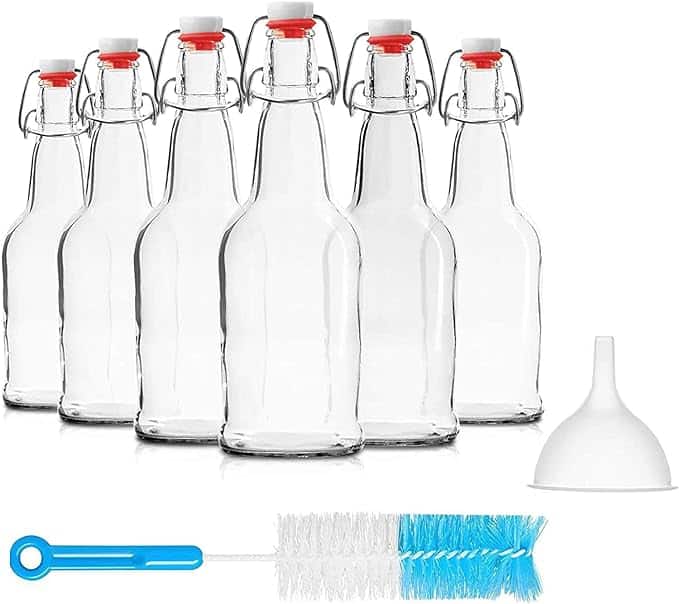
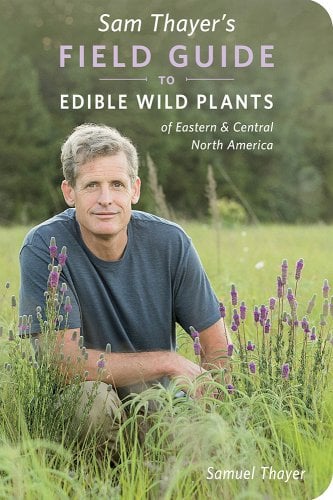
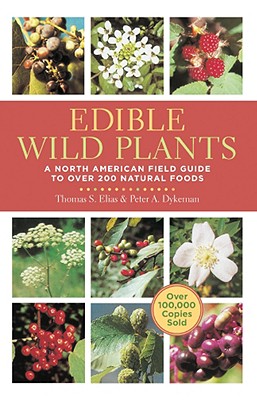
 Hi, I'm Susannah, a garden geek, energy nerd, and fan of healthy food and natural remedies. Need some simple, practical solutions for living healthier and greener? You've come to the right place! More about me and my green projects
Hi, I'm Susannah, a garden geek, energy nerd, and fan of healthy food and natural remedies. Need some simple, practical solutions for living healthier and greener? You've come to the right place! More about me and my green projects
Leave a Reply